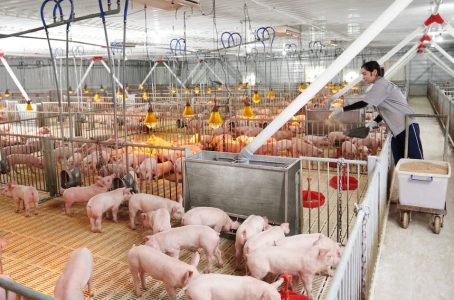Vietnam’s ongoing battle with African swine fever (ASF) is accelerating the country’s push towards industrialized livestock operations. This, according to a report by The Business Times, is opening new investment opportunities for industrial-scale pig farming companies.
Authorities noted that the resurgence of ASF in the past months has been largely concentrated in smallholder farms, while large-scale farms have generally kept the disease at bay by implementing strict biosecurity measures and proactively vaccinating their herds.
Vietnam, Southeast Asia’s top pork producer and the world’s sixth largest, had a surge in ASF cases in July 2025, with the number of outbreaks jumping 2.5 times month-on-month to the highest level since the beginning of the year.
New outbreaks despite existence of ASF vaccines
In the first seven months of 2025, 978 ASF outbreaks were reported across 33 of Vietnam’s 34 cities and provinces, leading to the death and culling of more than 102,755 infected pigs, up 53.3% from a year ago.
This comes despite the commercial roll-out of Vietnam’s two home-grown vaccines since July 2023 – the world’s first for the viral and deadly swine virus.
However, vaccine adoption has remained limited among smallholder farms due to cost and efficacy concerns, as well as a lack of government support financially and educationally.
The surge in ASF highlights existing biosecurity gaps in Vietnam’s pork sector, BMI analysts wrote in a note on August 11, 2025.
“The growth of industrial players with greater financial capacity to invest in biosecurity will help Vietnam’s pork industry better manage ASF and other disease risks that have challenged the sector over the past decade,” they added.
A momentum for large-scale players
ASF-related supply disruptions have also benefited large-scale players, which posted strong revenue in the second quarter thanks to high average pork prices, VNDirect analysts stated in a recent note on July 28, 2025.
They added that while the continued spread of AFS significantly impacted production among small-scale farmers, it further strengthened the position of large-scale, vertically integrated producers.
A report from the Department of Livestock Production in August 2024 showed that local smallholder farms account for roughly 35-40% of Vietnam’s total pork output.
The number of such operations had gradually declined by 5-7% annually over the previous five years, while enterprises formed through foreign direct investment had become dominant market players, the report noted.
Promotion of investment in processing
At a recent conference on ASF and slaughter regulation, the Agriculture Ministry said it will allocate land and issue special policies to promote investment in or conversion to hygienic, food-safe industrial or semi-industrial slaughter facilities.
“We expect government policies to drive consolidation in Vietnam’s pork sector,” BMI analysts stated, noting that small-scale farms will continue to decline as industrial producers come to dominate.
“Vietnam’s ongoing industrial transition presents significant investment opportunities,” they added.
In January 2025, the Vietnamese government began enforcing specific provisions of the 2018 Law on Livestock, which prohibit animal husbandry in urban and residential areas, and are expected to trigger a profound reform of the livestock industry.
“This regulation will force some small-scale livestock households to cease operations if they are unable to relocate, leading to a reduced supply,” analysts at Tien Phong Securities wrote in a note.
“This presents a major opportunity for large-scale livestock enterprises to expand their market share.”
One example is the recent proposal by domestic livestock company BAF Vietnam and its partner Muyuan Group – the world’s largest pig producer based in China – to build a high-tech, multi-story indoor pig farming complex in the southern province of Tay Ninh.
The facility, inspired by the Chinese model, is expected to produce 1.6 million commercial pigs annually, with a total investment of more than USD 458 million.
Pork production and consumption
Vietnam is expected to produce 3.8 million tons of pork in 2025, a 3% increase from the previous year, indicated a forecast by the US Department of Agriculture.
Despite the AFS outbreaks, the country’s total pig herd reached over 30 million as at end-July 2025, up 2.1% year-on-year.
With projected pork consumption of 3.9 million tons in 2025, Vietnam also ranks as the second-largest pork consumer in Asia, trailing only China, and the fourth largest globally.

